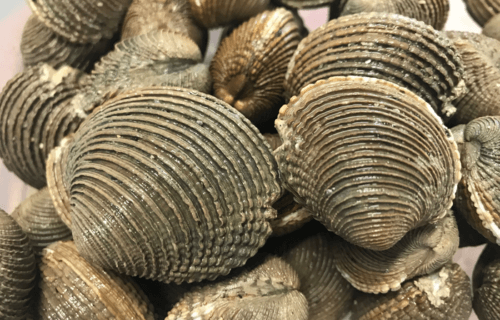SANTIAGO, Spain — Could cancer become a contagious disease? A recent study finds a blood cancer has “jumped” from one species of clam to another, spreading among mollusks from the Atlantic Ocean to the Mediterranean Sea.
Cancer is an awful disease, but doctors don’t usually consider it contagious. So, what’s going on here? Scientists from the University of Santiago de Compostela report this work further validates previously collected evidence suggesting cancers may have the capacity to spread among different species of bivalve shellfish. Importantly, however, the research also indicates that human activities may inadvertently be contributing to this troubling phenomenon.
Contagious cancers are a real thing
Contagious cancers, surprisingly, aren’t actually unheard of. Scientists have documented these diseases in dogs, Tasmanian devils, and various bivalves including mussels and clams. Most of the time, the cancer only spreads between members of the same species. Previous studies of note, however, have indeed verified at least two cases of contagious cancers spreading between bivalve species.
“We set out to confirm whether a leukemia-like blood cancer found in some bivalves also infects Venus verrucosa, otherwise known as warty venus clams that are found in the seas of southern Europe,” says co-first study author Daniel García-Souto, a postdoctoral researcher in genetics at the University of Santiago de Compostela – USC, Galicia, Spain, in a media release.
The team collected 345 warty venus clams from the coasts of Spain, Portugal, Croatia, France, and Ireland during their examination. They found a specific type of blood cancer (hemic neoplasia) in warty venus clams taken from two different regions of Spain. One group comes from Spain’s Atlantic coast, while the other group lives over 1,000 nautical miles away in the Mediterranean Sea.
From there, scientists used a technique called whole-genome sequencing to discover that the cancer originated from a single clam! At that point, the cancer became infectious and started spreading amongst other warty venus clams. Importantly, the cancer contained genetic sequences from both the warty venus clam and another species of clam unknown to scientists at the start of the study.
The cancer started in the striped venus clam
After comparing that mystery genetic sequence with a genetic database of bivalve species, it didn’t take the research team long to ID the mystery clam as Chamelea gallina (the striped venus clam). Additional tests conducted on DNA taken from both species’ mitochondria and nucleus confirmed the cancer had indeed jumped from its initial host (the striped venus clam) to another (the warty venus clam).
“The genetic similarity of the cancer cells found in warty venus clams in both the Atlantic Ocean and Mediterranean Sea suggests that human shipping activities may have transported the cancer from one region to another,” says co-first author Alicia Bruzos, who was a researcher PhD student at USC during the study. She is now at the Francis Crick Institute in London.
Moving forward, study authors want to conduct further research aimed at determining the age of the tumors found in their clam specimens. This will help shed some light on just how long cancer has been spreading through clam species.
“Our work confirms that contagious cancers can jump between marine clam species,” concludes senior author José Tubío, a researcher in genomes and disease at USC. “As this may pose a potential threat to marine ecology, we need to keep studying and monitoring pathogens including cancers to help protect these species.”
The study is published in the journal eLife.
